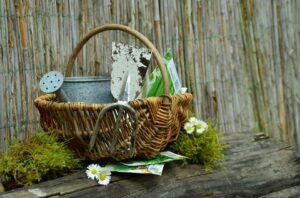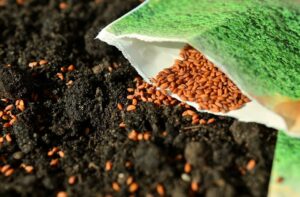Lawns look great. Lawns allow for activities. Lawns can even add value to your property. But the functionality of lawn goes far beyond what you might imagine.
Did you know that your lawn keeps your soil healthy, by penetrating the surface and allowing it to breathe and receive moisture? And the flow on effect of this is that the surrounding areas – usually your house – are the beneficiary of a cooler micro-climate created by your helpful turf.
After a long, dry summer though, even the hardiest of lawns can start to lose its powers. The air and water stop flowing through the grass and dirt, the soil dries and hardens, and what used to be a dynamic and active ecosystem is slowly baked into a harsh and dry environment.
While irrigation solves much of these issues, thanks to Australia being the driest habitable continent on earth, our water resources need to be widely distributed. Water restrictions in the drier parts of the country mean that even the most attentive and responsible of backyard gardeners may find that their lawn is looking weary by the back end of summer.
So what do you do if your lawn is looking a little dreary by February and March? Here are a few tips to get your oven-baked lawn back on its own two feet.
Aeration
Remember the fire triangle? Fuel/Air/Heat – you can’t create a flame until you have all three.
Lawns, and plants in general, have their own version – Air/Sun/Water/Nutrients. Let’s call it the lawn square. Without one element of the lawn square present, the whole thing collapses.
The air portion of this equation is often overlooked. It seems obvious that you’d be able to tick that off straight away – air is everywhere.
Not true. In the dry, hardened soil of an Australian backyard, air might be severely lacking. And the roots – the engine room of the grass – is where it’s needed most. The first step to revitalising your weary lawn? Aeration.
Whether it’s with a simple garden fork, pushed down and wiggled around to maximise the airflow through the soil, or with a rolling aerator (hireable from any good nursery), aeration is a must when it comes to repairing your lawn. Not only will it allow air into the soil, it will also give water a better chance of penetrating the soil before it is evaporated.
Weeding and De-thatching
The dead grass that builds up as a layer at the base of your healthy grass is called thatch. Thatch could be made up of lawn clippings, dead grass runners, or weeds.
The second step to lawn rejuvenation is to remove this thatching. Grab a rake and scrape out the build-up, and after that’s done, uproot any living weeds that you see lurking around.
Removing thatch does the same thing as aeration, allowing air, water and sunlight to penetrate down to the soil and beyond. Taking the dead material away will also allow fresh and healthy runners a good shot at thickening the grass.
Repairing Terminal Patches
Some patches will not just be tired and dormant, they’ll be dead. If a portion of your lawn has officially flat-lined, you’ll need to take more serious measures to get it back on track.
Reseeding or overseeding may be your first port of call. Fence the portion of turf off, and overseed the area with a matching grass seed. The amount of seed required for each lawn variety is available on the McKay’s website. You’ll need to be attentive if you want your seed to take, as it will require a good amount of water to germinate.
If you have an unseen portion of the lawn, and your grass variety is a runner, you could try replanting sod. Cut out a small (20cm x 20cm) patch of turf from elsewhere in your lawn, replant it in the area of concern, and allow it to grow over the dead turf. This is a low-cost and natural way to bring your lawn back to full health.
When transferring sod, make sure you replant it deep enough so that the roots are entirely hidden. Top-dressing both reseeded and sod-transferred patches will help kick their growth along.
For more advice on repairing damaged lawn, contact your local McKay’s seed specialist.



